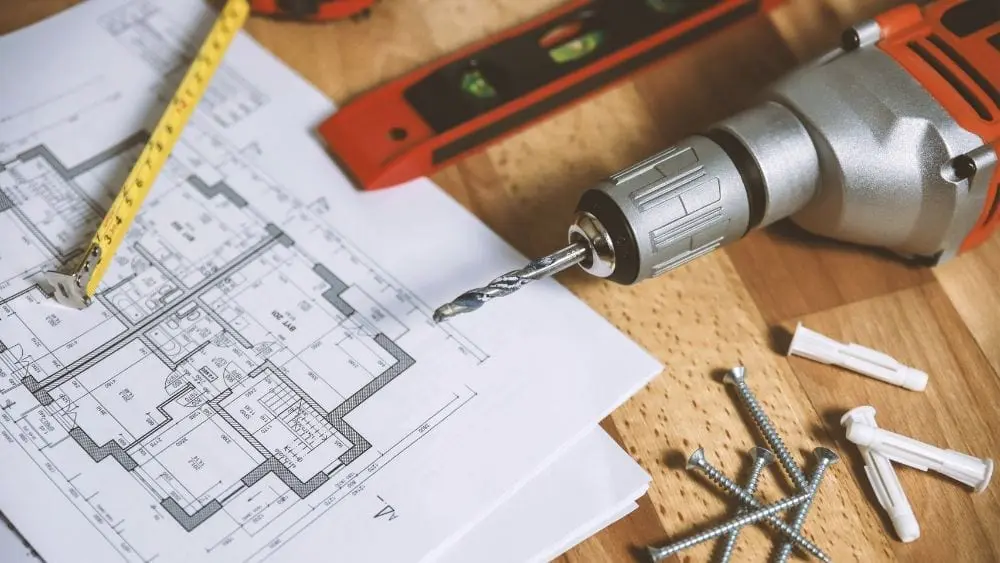
You don’t have to be serious about building your own home to enjoy browsing online or through a book of house plans. After all, for many folk, these catalogs are wish books that are every bit as much a part of the American dream as buying that first house.
And if you should end up actually buying a set of plans, realize that you are far from alone. The stock house plan business is a multi-million industry. Nobody counts how many sets of blueprints are sold every year, but Tammy Crosby of Direct from the Designers (DFD) suspects the number is well over 100,000. Her firm alone “sells thousands,” she says.
Even some builders buy stock plans, aka pre-drawn plans. Some 40 percent of the plans sold by DFD in a given year are to builders and contractors, Crosby estimates. Of course, there’s no telling how many people, either consumer or professional, actually use their over-the-counter plans as the basis for building a house. Not everyone turns their dreams into reality, but many do.
Over the last four quarters, ending with the third quarter of 2018, custom housing starts totaled 175,000, 116,000 by contractors, according to the National Association of Home Builders. That leaves 59,000 that were owner-built, and they got their plans from somewhere.
If you are interested in buying your new home floorplans yourself, here’s how to get started:
Step 1: Review your budget
If you plan – no punt intended – to turn your fantasy into actuality, you should start with an idea of how much you can afford. And affordability comes in two forms – the cost of the plans themselves and the cost to build the plan you eventually settle on.
At DFD, plans run anywhere from $850 for a small PDF file to $3,000-$4,000 for a large CAD file. Stock plans from Hajek & Associates, a custom home designer in Austin, Tex., average is $1,000-$2,000. But even at the upper end, the fee is a small price to pay when compared to what an architect might charge – 10 to 20 times the cost of a stock plan, ventures architect Jeri Hajek – to design your new house.
There are other advantages to stock plans, too. For one thing, they are drawn by some of the best designers in the country. “We are very selective,” says DFD’s Crosby. “We work with only the 35 top residential architects in the country.” For another, you can get them fast, usually within a day vs. two-to-four months if you hire an architect directly, Hajek points out.
Step 2: Determine what you want
Obviously, in choosing a particular plan, you should be cognizant of your needs and desires – number of bedrooms, for example, storage, hobby space and so on. This, of course, is up to your personal preferences. But to help you narrow your choices, you may want to send away for a study plan for each design that sets your heart a flutter.
DFD, which is the exclusive house plan provider for Professional Builder Magazine, Better Homes and Gardens and This Old House, sells study plans for as little as $250 to $500. Hajek, on the other hand, stopped selling them because too many people tried to build from them alone, even though they don’t provide the necessary details that are in a full set of blueprints.
Step 3: Select a few floor plan options
Dreams can only take you so far, though. Eventually, reality must set in. So, before laying out any money, you can get a rough idea of what price range you’re looking at by the plan’s square footage. Generally, a house under 1,500 square feet is considered an affordable or starter home. If it’s between 1,500 to 2,200 feet, it’s a move-up house. If it’s larger than that, it’s in the luxury category.
Once you’ve settled on a plan or two that looks as though it fits your pocketbook, you get get a better idea of what it will cost to build by multiplying the square footage by the average cost to construct a house in your area.
Average costs varying nationally, so you’ll have to check with a local contractor or home builder association. To give you an idea, let’s use the Census Bureau’s average price per square foot of $111 for a house sold in 2017. So, if you are contemplating a 2,000-foot house, the cost would be somewhere in the range of $220,000.
Realize, however, that no matter what figure you use, it does not include a number of expensive items: the price of your land, for example, or the cost of a driveway, curbs, sewer and water lines. Also, your eventual payout could rise significantly, depending on the quality of the materials and finishes you intend to use.
Step 4: Review your building site and contract before purchasing plans
On the other hand, once you purchase a set of plans, you can modify them to your heart’s desire. But before you buy, you should have your building site in hand, or at least under contract. Too many people make the mistake of buying a plan first. Then, when they find a lot they like, they learn the plan they love can’t be built on it.
Step 5: Make sure all necessary parties review and approve plans
Many jurisdictions require a local architect or engineer to review and put their “seal” on any blueprint prior to construction to make sure it conforms to ever-changing local building codes. So, If you purchase a plan that was designed by an architect from, say, Arizona, and you hope to build in New Jersey, the design will have to be reviewed by a Garden State building professional.
Step 6: Know what you are buying – and the limitations the plans come with
Before buying a full set, you should understand what you are paying for and do your best to compare that against what you will receive from another company. A complete set from Hajek includes the following:
A cover letter explaining the scope of the project, a list of codes followed in designing the plan, the total square footage so you can obtain building permits, plans for each floor, a list of interior details that aren’t visible on the blueprint, sheets showing where electrical fixtures should be placed, a roof outline showing shapes and slopes and a foundation outline showing shape, size and height differences.
Finally, a word of warning: House plan companies grant permission to consumers to build just one house from their blueprints. Any more than that and you are violating the nation’s copyright laws. “I don’t care how many copies you make,” says Hajek, “as long as you build just one house.”
And don’t think you can save a bunch of money by simply picking out a plan from a book and letting a builder take it from there, think again. “It’s wrong, it’s illegal,” Hajek explains. “Even if you use it as a starting point and modify it extensively, it is a copyright violation.”

Lew Sichelman is a nationally syndicated housing and real estate columnist. He has covered the real estate beat for more than 50 years.
 The Benefits of Building a Luxury Home Versus A Luxury Renovation
The Benefits of Building a Luxury Home Versus A Luxury Renovation
Alexander McCray Sr.
Looking for a general contractor to build my custom home. I have a house plan.Want to build on my own land. Land had been cleared. Septic inspection has been approved. Ranch style house. Three bedrooms and bathrooms. Location is Pineville S.C (29468).